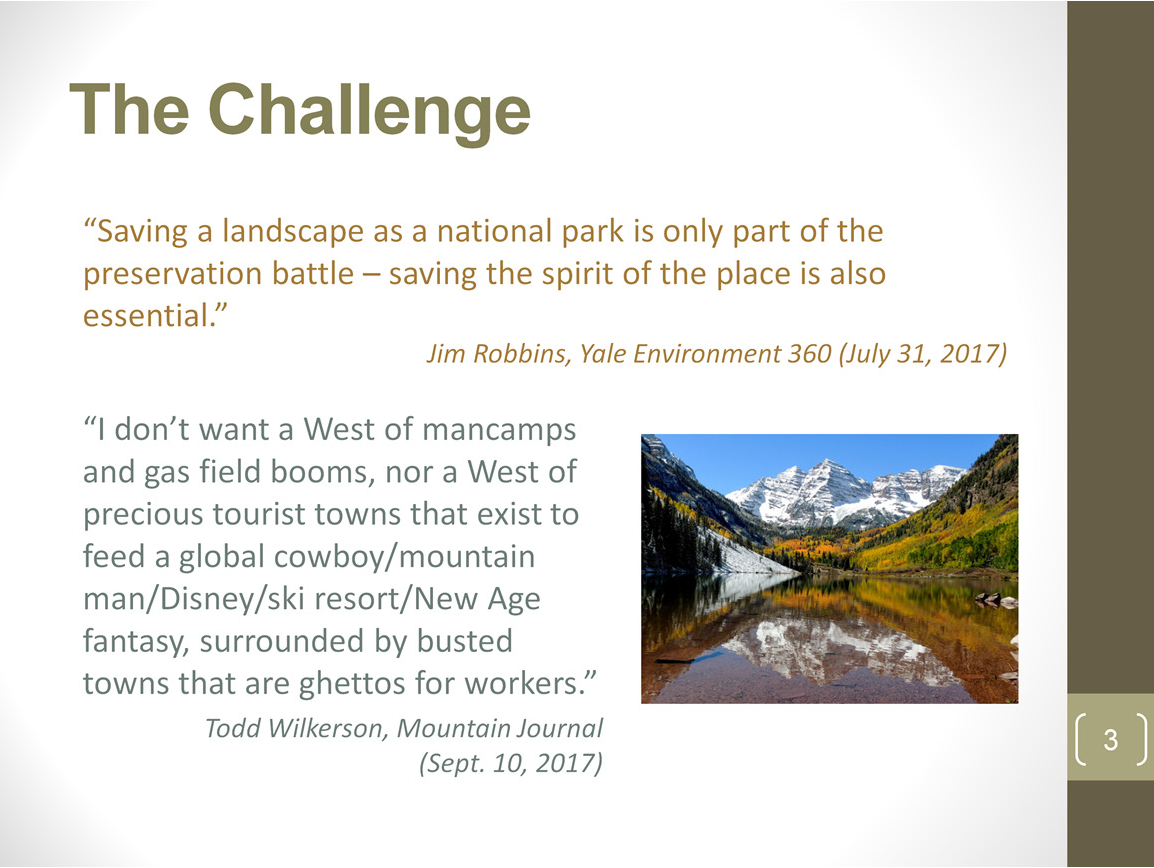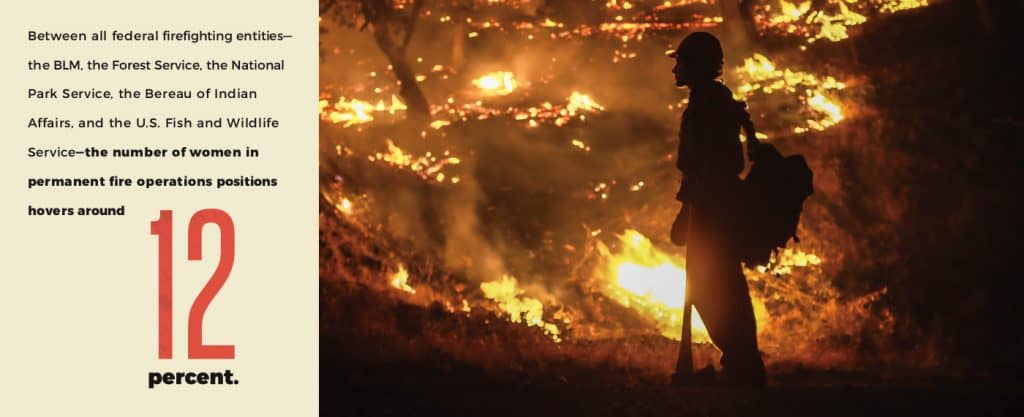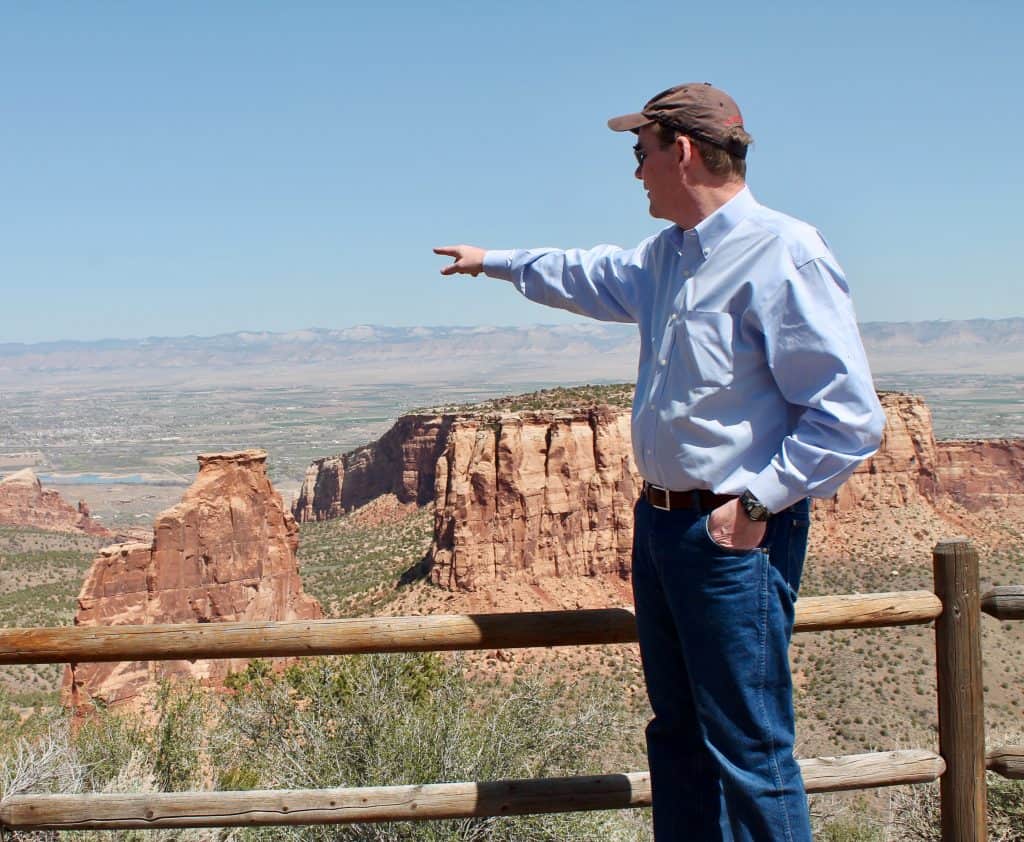
Thanks to Rebecca Watson for sharing her powerpoint in the comments here. Travis and I started a discussion there, but feel free to comment here as well. As usual, I’m curious about whether folks in other states have other takes and other ideas that have worked.
It is definitely worth reading in its entirety, but I extracted a few of the ideas for this post. Walt Hecox, from Colorado College, had these supply and demand ideas,
Colorado College Economics Professor, Walt Hecox, who has led the Colorado College’s Annual Conservation Poll, got us started with some tough choices. He challenged us by saying you can:
• Grow the supply of recreational resources – for example, corporate adopt-a-trail/
road or greater roles for concessionaires
• Slow/limit the demand for those resources – limit visitors, auction access, charge for use.
Susan Daggett and Peter Metcalf argued that we should steer recreational users to places that have the hardened infrastructure to take the abuse of increased numbers.
• Focus some recreational use in urban areas. (Susan Daggett)
• Consider the 14’ers in Colorado as “urban interface” and build the infrastructure—a parking lots, permanent toilets, hardened trails—to handle the crowds. (Peter
Metcalf)
But where can the money come from?
1) Pay to Play
• California’s “green tag” OHV fee program is one successful model to raise funds from users.
• USFS/NPS charge parking fees and entrance fees at certain popular places.
• The Federal Lands Recreation Enhancement Act of 2004 (FLREA) fee program was started in the Bush Administration and Lynn Scarlett and I both advocated to Congress to
let FS/Interior agencies collect fees at developed locations and plow the $$ back into those areas, but…
• Some object and have sued (“I already pay taxes” or “that place is an exception to FLREA”).
• Although NPS collects the most $$, in 2015 OIG faulted NPS for not using the authority as much as it could.
• This year Interior Secretary Zinke was blasted for seeking big fee increases at 17 popular parks under this authority.
• FLREA authority was set to expire in 2016, but it was extended into FY 2017 and this year the Forest Service budget asked for permanent reauthorization.
(2) Excise Taxes
The Hook & Bullet component of outdoor recreation has been taxing the equipment they use in their recreation for many decades. In 1930 Pittman Robinson was enacted to tax hunting equipment and in 1952 Dingell Johnson to tax fishing equipment. This money goes back to the State Game & Fish agencies for habitat acquisition and management for game species. Over the years – billions of $$. This year, Secretary Zinke highlighted $1 billion from this tax for state wildlife programs.
• Some argue that other members of the Outdoor Industry Association (OIA) should do likewise – tax those $10,000 mountain bikes, $50 backpacks, tents and skis.
• Since 1999, OIA has opposed this arguing that since much of their product is imported they already pay excise taxes into the General Treasury and shouldn’t be asked to pay more. This position may change as the industry plays a larger role in GDP.
(3) Federal Legislation
Federal Legislation can bring focus and funding to outdoor recreation management.
• 2018 “National Trails Stewardship Act” directs USFS to publish a national strategy to strengthen role of volunteers to “augment and support capabilities of federal
employees.”
• Recently Secretary Zinke and Senator Alexander introduced a “National Park Restoration Act” – “all energy” additional revenue towards NPS infrastructure needs.
• “State Wildlife Action Plans” to conserve nongame habitat – OIA/AWFA say use energy royalties to fund this need.
• Fully appropriate Land & Water Conservation Fund (LWCF) ($900 million per year)
• Enacted in 1964; uses offshore O&G royalties to meet the annual appropriated amount.
• 2 components:
• State grants to acquire/develop recreational lands
• Fed side – acquire lands and waters
• Note neither is focused on maintenance/stewardship of the lands
• Full appropriation only happened twice in 49 years – most $$ flows into General Treasury and the annual appropriation is well below $900 million. Up for
reauthorization in 2018. FY 2018 Appropriation Bill funds LWCF at $425.
• “Recreation Not Red Tape” – help outfitters and promote private section volunteers
• “Outdoor Economy Act” – Interior Recreation FACA; FS already has a recreation FACA
Volunteer Stewardship:
Through our dialog in Colorado and our conversations in DC, VOC (Volunteers for Outdoor Colorado) has identified some concrete steps that could enhance the role of volunteer stewardship:
• Nationwide stewardship network similar to the youth-focused Corps Network
• Volunteer offices in FS/BLM field offices – volunteers helping to coordinate stewards for the work inside the agencies
• VOC/USFS share the cost of the volunteer coordinator
• Work standards/training for trail work, water restoration
• Outdoor Stewardship Institute (OSI) training certificate – quality assurance for the land manager – volunteers trained in the work and safety protocols
• New funding model for stewardship work – across a landscape and multiple years of funding (with metrics) directed to make a meaningful impact rather than year-by year piecemeal work that may not be adequate to the need.


